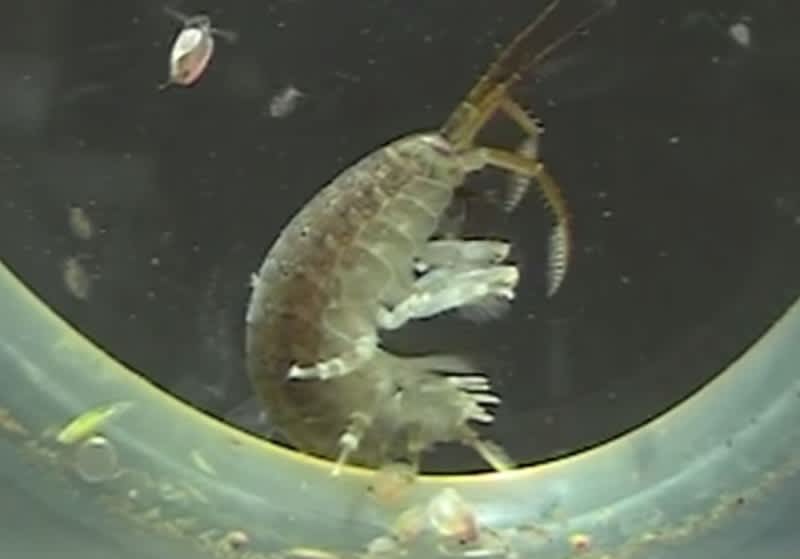Study: Killer Shrimp May Be the Next Major Invasive Species to Hit the Great Lakes
OutdoorHub Reporters 02.09.15

A species of shrimp native to Eastern Europe is now a cause for concern for biologists studying the Great Lakes. Its scientific name is Dikerogammarus villosus, but experts know this voracious crustacean simply as the killer shrimp. The shrimp itself is only about an inch long, but its large mandibles make it an aggressive predator and it is notable for its tendency to kill even when not hungry. Already a nuisance in Western European waters, researchers at McGill University said that the killer shrimp could pose a problem for the Great Lakes before 2063.
“Consequently, in 50 years, the Great Lakes would be populated with many new invaders, most of which may come from inland waterways where Europe and Asia meet—the region around the Black Sea,” stated a press release from the university. “This region is the source of some of the most disruptive invaders in the Great Lakes today, such as the zebra mussel, and still has many species at a high risk of invading the North American lakes and rivers, such as the killer shrimp or the monkey goby.”
Researchers said that the danger these invasive species pose to North American waterways depends upon what kind of legislation is in place to protect against them. More than 180 non-native species moved into the Great Lakes over the past two hundred years, but recent safeguards—such as rules on how ships can use ballast water—have dramatically lowered the chance for new species to get in. Researchers explained that additional policies, including regulation of live trade, is needed to protect the lakes.
“No new species have been recorded since 2006,” said Katie Pagnucco, PhD student at McGill and lead author of the study. “We may have closed the door on ballast water-mediated invasions. That remains to be seen. But other doors are still open.”
Last year Michigan took steps to prevent killer shrimp, as well as other invasive species, from establishing themselves in the region. In November, the state Department of Natural Resources (DNR) added killer shrimp to its prohibited species list, which made live specimens of the shrimp illegal to possess.
“They have a really big mouth and claws, and they literally shred their prey,” DNR spokesman Nick Popoff told the Detroit Free Press. “They are very aggressive in any of the systems that they get into.”
Researchers advised that other states should look into similar measures to ban the live trade of killer shrimp in case ballast water regulations prove ineffective. Killer shrimp are highly adaptable and are known to establish colonies in a number of environments, pushing native species—some vital to local food chains—out.
You can see a video of a killer shrimp grooming its antennae below:

